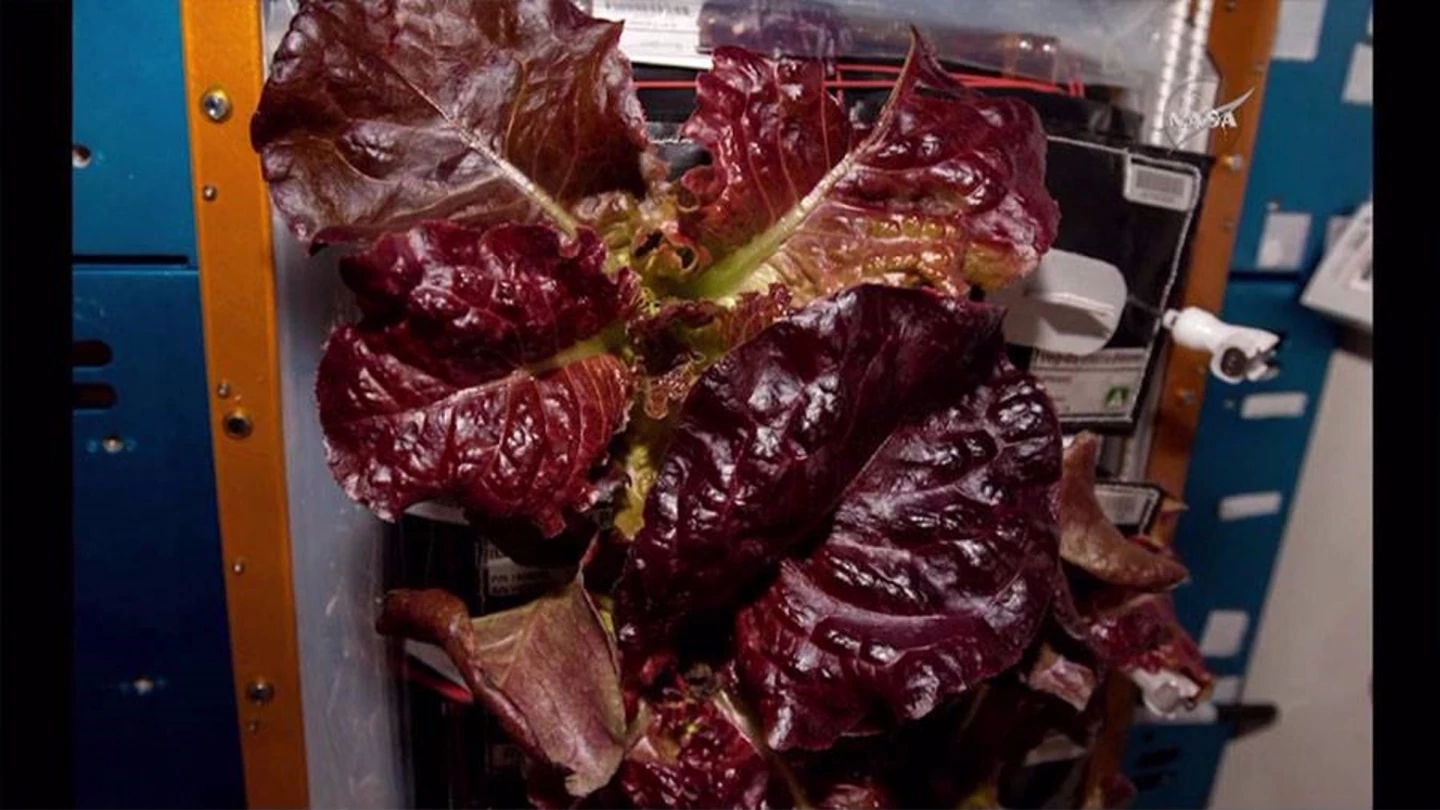The International Space Station (ISS) was the scene of an historic lunch this week with the crew members of Expedition 44 dining on the first meal harvested in space. The dish, which consisted on leaves of "Outredgeous" red romaine lettuce grown in NASA's "Veggie" zero-gravity greenhouse, is part of the space agency's effort to find ways to feed tomorrow's deep-space travelers.
The meal, which was eaten on Monday by US astronauts Scott Kelly, Kjell Lindgren, and Japanese astronaut Kimiya Yui, was a very informal affair. For preparation, the lettuce was harvested and treated with a citric acid-based, food-safe sanitizing wipe. Since the yield consisted of only a few leaves, the repast was more of a tasting as the three men floated in the experiment module munching on a leaf each. However, the taste was reported by one astrodiner as "awesome."
The Veg-01 experiment sees plants grown in zero gravity in a plastic greenhouse that consists of a collapsible plastic tent with a controllable atmosphere that is lit by red, blue, and green LED lamps. The red and blue lamps provide light to grow the plants, while the green gives the crops a less alien appearance. The seeds themselves are embedded in rooting "pillows" that take the place of soil for root growth and retaining water.

The main purpose of Veg-01 is to test technology that may one day allow astronauts to grow gardens aboard spaceships, space stations, or planetary outposts. It isn't possible to carry enough food, water, and air to make manned voyages lasting months or years feasible with current rocket technology. However, a carefully selected crop of plants can cut the supply list by recycling air and waste to produce fresh air, water, and food for the crew. In addition, fresh foods can improve nutrition by providing vitamins and antioxidants.
According to NASA, crew morale is another factor in the experiment. Deep space missions, such as a mission to Mars, will mean small crews working in close confinement with very little to do for long periods of time – a prime recipe for disaster. Recreational activities, such as gardening, combined with the presence of growing plants and periodic fresh food can be a surprisingly effective morale boost and reduce tensions.
In addition, urban farming may also benefit from the ISS farming experiments. In recent years, vertical farming has attracted a great deal of interest from environmentalists, architects, and urban planners. Such farms would use a similar artificial lighting and growing media and the earthbound projects could benefit from the experience gathered on the ISS.

The Veggie technology was developed by Orbital Technologies Corp. (ORBITEC) of Madison, Wisconsin and was delivered to the ISS by a SpaceX cargo ship in April 2014. In addition to the greenhouse, the experiment also included two sets of growing pillows with romaine lettuce seeds and one with zinnias. A first crop was grown in May of 2014 over a 33 day period, but these were preserved and returned to Earth in October of last year for safety analysis at the Kennedy Space Center in Florida. The second crop was started on July 8 and also harvested after 33 days.
One reason the portions for Monday's meal were so small is that half of the tiny crop along with their root pillows were bagged and preserved for later transportation to Earth, where they will be subjected to scientific analysis. According to NASA, the main concern is microbial contamination, but the results from the first crop have been positive. The hope is that the experiment will help scientists to gain a better understanding of how to grow plants in a completely artificial environment. In addition, NASA is working on how to increase the system's yield, so it produces more than a few mouthfuls at a time.
The video below shows the consumption of the historic salad.
Source: NASA












